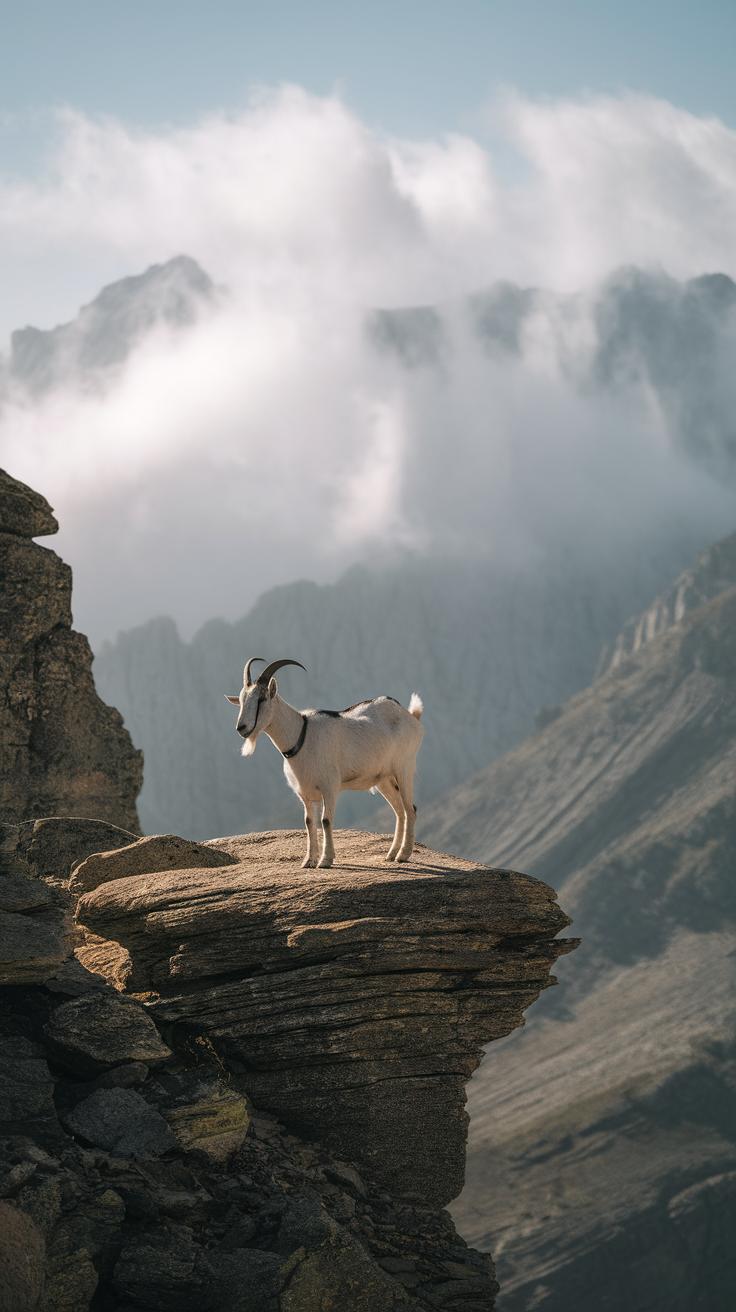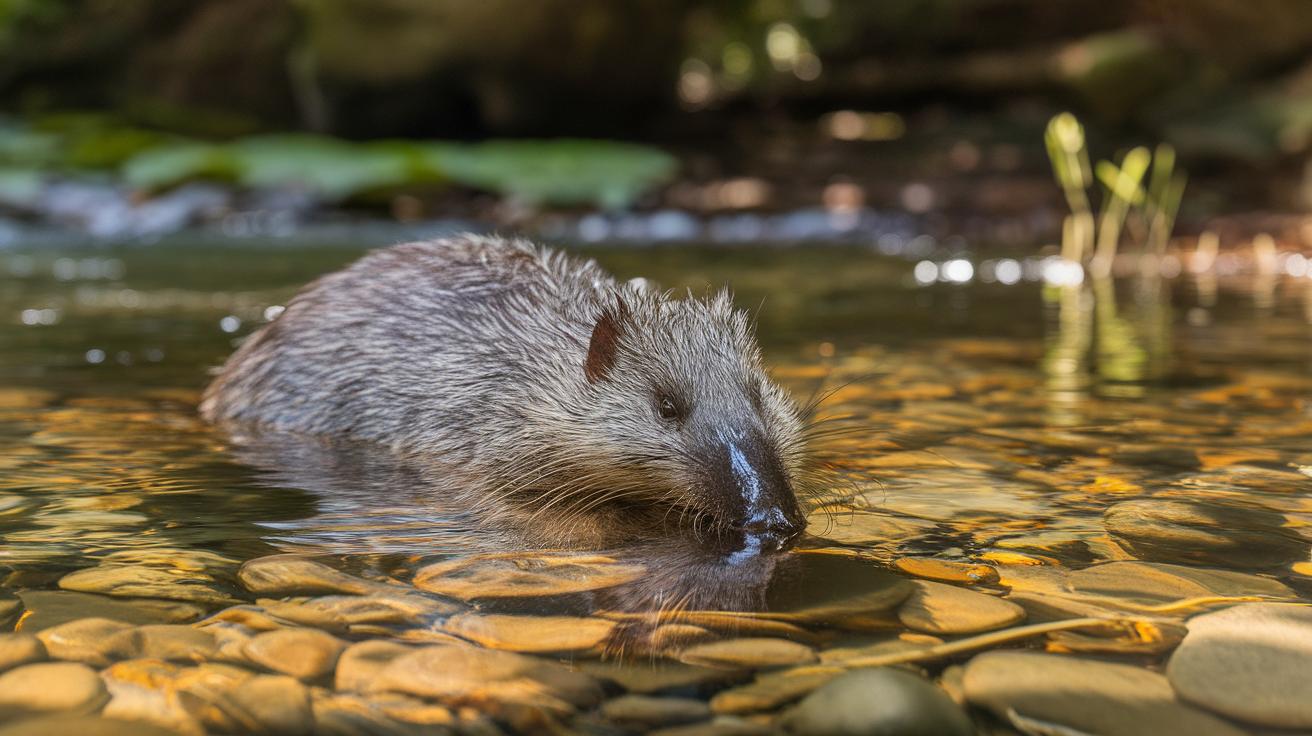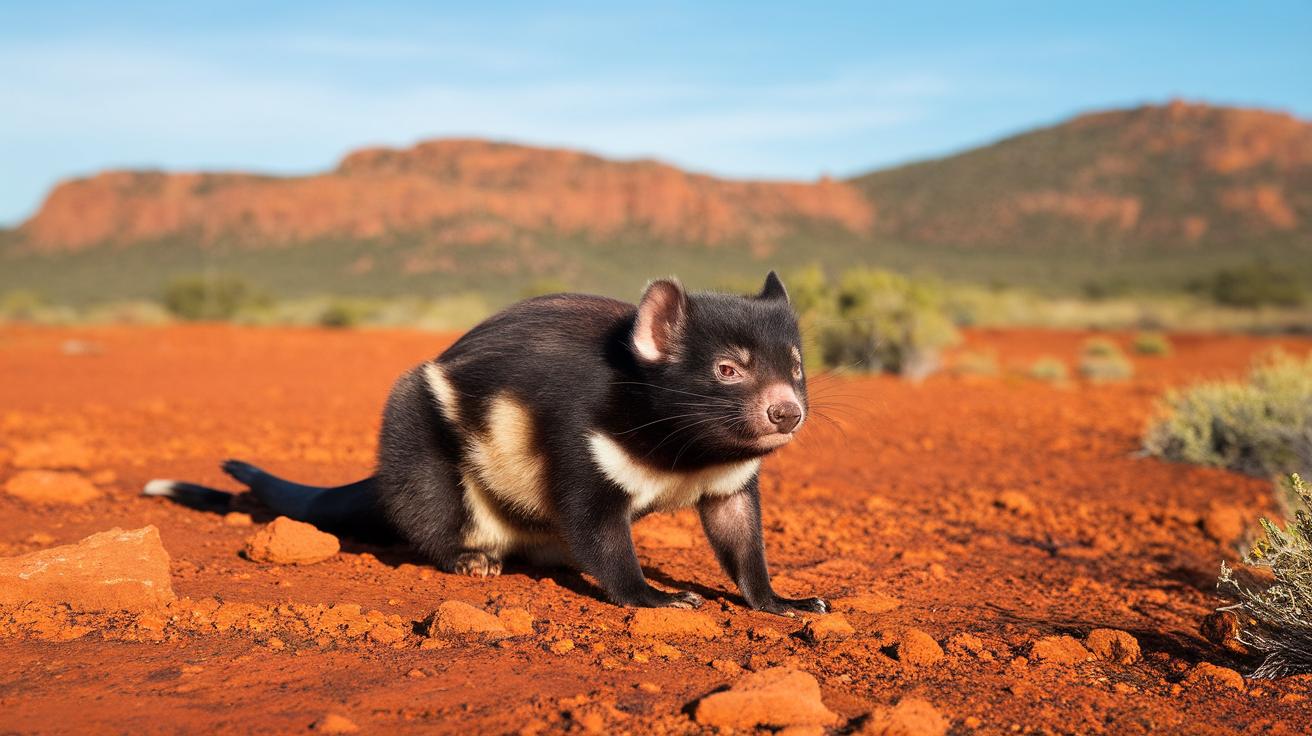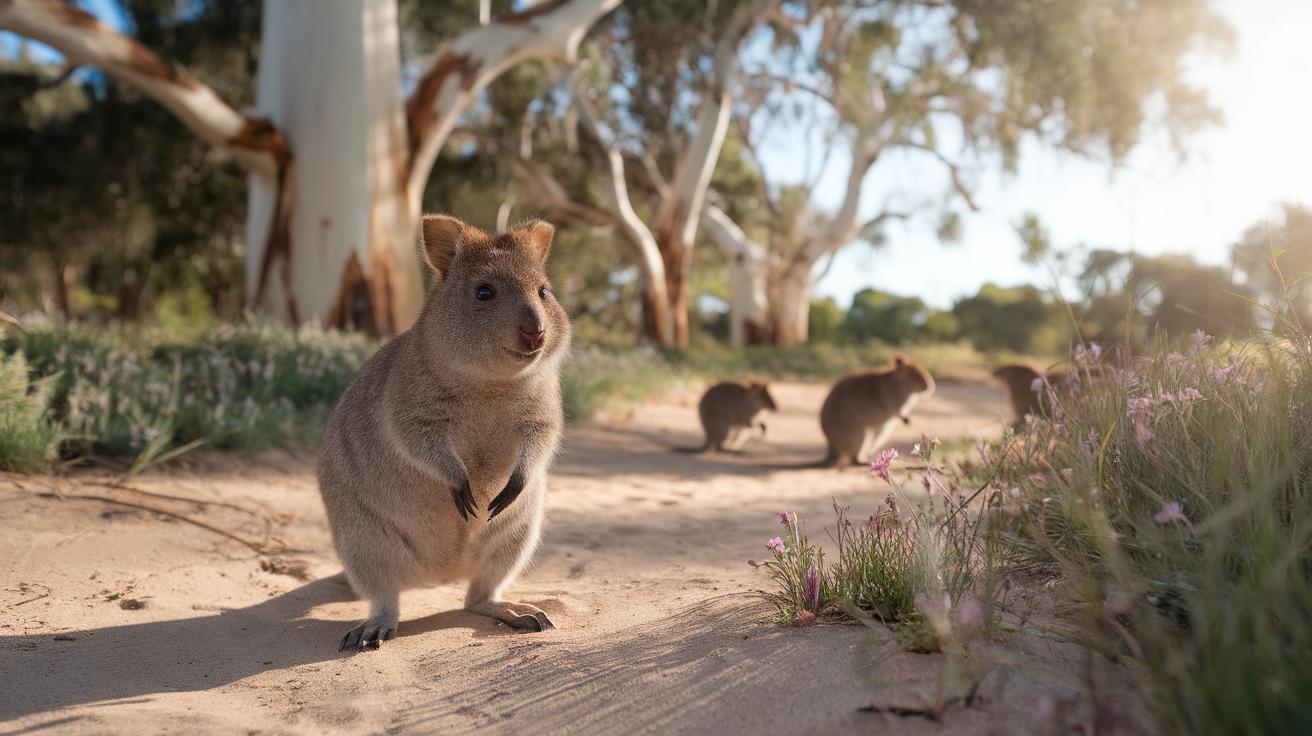Introduction
The mountain goat, scientifically known as Oreamnos americanus, thrives in the rugged, steep terrains of North America’s northern ranges. Renowned for their climbing agility and ability to navigate sheer cliffs, these animals have adapted perfectly to life in high, rocky altitudes. This article explores the remarkable trails frequented by mountain goats, examining their habitats, behaviors, and the challenges they face. Through this exploration, one gains insights not only into the mountain goat itself but also into the breathtaking adventures that await those who seek to encounter them in their natural settings.
As enthusiasts venture into the lofty domains of these fascinating creatures, it becomes crucial to understand the ecological dynamics that support them. From their herbivorous diet tailored to high-altitude flora to their resilience against harsh climate conditions, mountain goats symbolize endurance and the beauty of nature’s design. Furthermore, this article will highlight various hiking trails, prepare adventurers for safe excursions, and discuss conservation efforts aimed at protecting these iconic residents of alpine environments.
Introduction to Mountain Goats Explore the unique traits of mountain goats their habitats and how they thrive in high altitudes
Mountain goats, known scientifically as Oreamnos americanus, exhibit remarkable adaptations that enable them to thrive in some of the most extreme environments on Earth. These iconic animals possess thick, insulated coats that protect them from harsh weather conditions, allowing them to remain active in high elevations even during frigid winters. Their unique hooves provide exceptional grip on rugged terrains, facilitating agile movement on steep cliffs and rocky outcrops. This adaptability enables mountain goats to access food sources that are scarce for most other species, such as alpine grasses and shrubs.
Mountain goats are primarily found in the mountainous regions of North America, specifically inhabiting the rugged ridges and cliffs of the Pacific Northwest and the Rockies. They prefer elevations between 3,000 and 13,000 feet, demonstrating an extraordinary capacity to navigate high-altitude terrains. These remarkable traits not only guarantee their survival but also highlight their significance in the intricate ecosystem of mountainous habitats.
Geography of Mountain Goat Habitat Preferred Environments
Regions and Climatic Conditions
Mountain goats are primarily found in the rugged terrains of North America, thriving in areas characterized by steep cliffs, rocky slopes, and high-elevation meadows. Their habitats stretch across the Rocky Mountains, the Cascade Range, and the coastal mountains of Alaska and British Columbia. These regions offer the ideal mix of rocky outcrops and alpine vegetation, providing ample resources for grazing and enabling the goats to evade predators.
Preferred environments for these remarkable animals typically range from 3,000 to 13,000 feet in elevation, where harsh weather conditions and difficult terrains create both challenges and protections. The geological formations offer them natural shelter, while the subalpine and alpine flora supplies the nutritious food necessary for their active lifestyles. High winds and cooler temperatures also favor their thick coats, allowing mountain goats to thrive in these extreme altitudes.
Impact of Altitude and Terrain
Even within these high-altitude habitats, there are specific preferences. Mountain goats exhibit a tendency to inhabit areas with steep cliffs and rocky outcrops, which provide them with vantage points to scan for threats. The unique topography allows for effective navigation, as their specialized hooves are adept at gripping even the most uneven surfaces. These environmental preferences underscore their remarkable ability to flourish in some of the most challenging terrains on Earth.
Mountain Goat Behavior Explore the Social Behavior and Lifestyle of Mountain Goats
Social Structure and Group Dynamics
Mountain goats exhibit fascinating social behaviors, primarily living in small herds that consist of females and their young. Males typically lead solitary lives or form small bachelor groups, which allows them to avoid conflicts over territory and mating rights. The social structure within these herds is often matriarchal, with older females guiding the group to accessible feeding areas and safeguarding the young. Communication among mountain goats includes a range of vocalizations and body expressions, helping to reinforce social bonds and alert others to potential dangers.
Feeding and Habits
Foraging is a key aspect of daily life for mountain goats. Their herbivorous diet primarily consists of grasses, shrubs, and lichens, selected based on seasonal availability. Social interactions often influence feeding patterns, as goats may graze together, keeping watch for predators while benefiting from each other’s vigilance. During the rutting season, males engage in displays of dominance, using body size and strength to assert their status and attract females. These behaviors not only strengthen social hierarchies but also help ensure genetic diversity within the population during mating.
Endurance and Adaptability Unveiling Mountain Goats in Extreme Elevations
Surviving the Harsh Environment
Mountain goats are remarkable creatures, adept at thriving in the challenging conditions of high elevations. Their unique adaptations make them one of the few species capable of scaling the steep, rugged terrain. Thick, insulating fur provides warmth against biting winds and frigid temperatures, while their specialized hooves offer exceptional grip on rocky surfaces. This combination of features enables them to traverse often treacherous landscapes with agility and confidence.
Physiological Resilience
The mountain goat’s physiology further enhances its endurance. A highly efficient respiratory system allows these animals to extract maximum oxygen from the thin air found at higher altitudes. Their diet, consisting primarily of alpine vegetation, is nutritionally rich, ensuring they receive the sustenance necessary for energy-intensive activities. Coupled with their ability to regulate body heat, mountain goats exemplify resilience in the face of extreme environmental challenges.
Mountain Goat Trails Discovering Thriving Habitats
Regions Rich in Mountain Goat Activity
Mountain goat trails offer a unique glimpse into the habitats of these remarkable animals. Popular regions known for mountain goat sightings typically feature rugged terrain and steep cliffs, ideal for their climbing abilities. The North Cascades in Washington and Glacier National Park in Montana are exemplary locations where enthusiasts can observe these resilient creatures in their natural environment. In these high-elevation areas, trails such as the Cutthroat Trail or the Grinnell Glacier Trail provide optimal opportunities for sightings. Visitors are often rewarded not only with breathtaking views but also with moments of being up close to the mountain goats. Their presence indicates healthy ecosystems, demonstrating the vital relationship between these animals and their habitats.
High Altitude Adventures Activities in Goat Habitats
Thrilling Experiences in Mountain Goat Territories
High-altitude areas where mountain goats thrive offer an array of exhilarating activities for adventurous souls. Hiking along rugged trails, often frequented by these majestic creatures, allows enthusiasts to immerse themselves in breathtaking landscapes that form the goats’ natural habitat. Climbers find challenges in conquering breathtaking summits, testing their skills against the dramatic terrain that mountain goats effortlessly navigate.
Wildlife photography presents a unique opportunity to capture the resilience and grace of mountain goats in their alpine environment. Birdwatching complements these experiences, as diverse avian species inhabit the same regions. For those seeking a more leisurely approach, scenic strolls through lush valleys beneath towering peaks provide a serene connection to the enchanting nature surrounding these remarkable animals.
Conservation Efforts Protecting Mountain Goat Populations
Ongoing Initiatives in Conservation
Effective conservation efforts are crucial in safeguarding mountain goat populations, particularly as climate change and human encroachment threaten their habitats. Several organizations and government bodies collaborate to monitor these high-altitude dwellers. For instance, wildlife biologists employ tracking technology to understand migration patterns and habitat use, which is vital for developing effective protection strategies.
Conservationists are also working to establish protective regulations that limit human activities in critical habitats. Public awareness campaigns educate outdoor enthusiasts on responsible behavior while in goat territories. By promoting stewardship, these initiatives aim to mitigate disturbances that could lead to increased stress on these resilient animals.
Habitat Restoration and Research
Restoration projects focus on rehabilitating environments that have suffered from overgrazing or development pressures. These efforts are complemented by research initiatives that study the genetic diversity of mountain goats, which is essential for preserving their resilience against diseases and environmental changes.
Connecting habitats through wildlife corridors can also enhance gene flow among populations, ensuring the long-term survival of the species. Ultimately, collaborative efforts among researchers, conservationists, and the public hold the key to maintaining viable mountain goat populations for future generations.
Interactions With Humans Examining the Relationship Between Mountain Goats and Human Activities
The relationship between mountain goats and humans has become increasingly complex as outdoor recreation expands into their habitats. These magnificent animals, renowned for their adept climbing skills, often intersect with hikers, climbers, and wildlife enthusiasts. For many, encountering mountain goats during adventures serves as a unique highlight, promoting wildlife appreciation and conservation awareness. However, such interactions can also lead to detrimental effects on goat behavior and health.
Human activities, including hiking and backpacking, sometimes disturb goat populations, causing stress that can disrupt their natural foraging patterns. Feeding mountain goats, while tempting for many thrill-seekers, is particularly harmful; it can lead to dependency on human-provided food sources and dangerously close encounters that increase the risk of aggressive behavior. Responsible wildlife viewing and adherence to guidelines are paramount to preserving the integrity of these high-altitude trails and the well-being of mountain goats.
Health and Risks Mountain Goats and High Altitude
Health Risks at Extreme Elevations
Mountain goats are superbly adapted to high-altitude environments, but they still face significant health challenges. The thin air at elevations exceeding 10,000 feet considerably decreases oxygen availability, leading to potential hypoxia, where the body suffers from insufficient oxygen. This condition can affect not only goats but also humans, who may experience shortness of breath, dizziness, or fatigue during recreational activities at such heights.
The harsh conditions also expose mountain goats to environmental stresses like extreme cold and harsh winds, which can compromise their immune system, making them susceptible to diseases. For humans, altitude sickness poses risks, and acclimatization becomes essential before embarking on high-altitude adventures. Both species must contend with risks associated with navigation, as missteps on rugged terrain can result in injury. Fostering an understanding of these health risks is paramount for safe exploration in these breathtaking landscapes.
Conclusion The Significance of Mountain Goats and HighAltitude Adventures
Mountain goats serve as a remarkable testament to nature’s adaptability and resilience, thriving in the most challenging high-altitude environments. Their unique physiological characteristics, such as specialized hooves and thick fur, allow them to navigate steep, rocky terrains with ease. This ability not only highlights their evolutionary success but also influences the ecosystem, as their grazing patterns help shape vegetation dynamics at elevation.
High-altitude adventures, inspired by the presence of these majestic creatures, offer exhilarating experiences for enthusiasts and adventurers alike. Engaging with the breathtaking landscape and learning about the intricate interplay between mountain goats and their environment fosters a deeper appreciation for wildlife and conservation. Both the pursuit of outdoor adventure and the study of mountain goats ultimately underscore the interconnectedness of life in these remote, elevated regions, reminding us of the beauty and fragility of nature at extreme elevations.
Conclusions
Mountain goats represent a unique aspect of biodiversity, embodying the spirit of high-altitude resilience. Their specialized adaptations allow them to thrive in environments that seem inhospitable to many, showcasing nature’s incredible capacity to foster life even in extreme conditions. This exploration of mountain goat trails and high-altitude adventures invites outdoor enthusiasts to engage with nature while fostering respect for these magnificent animals.
The relationship between humans and mountain goats can be beneficial when approached with consideration and mindfulness. Sustainable outdoor practices combined with effective conservation strategies are essential for ensuring the future of mountain goats and their breathtaking habitats. By appreciating and protecting these majestic animals, we can continue to enjoy the adventure and splendor that comes with high-altitude explorations.




















